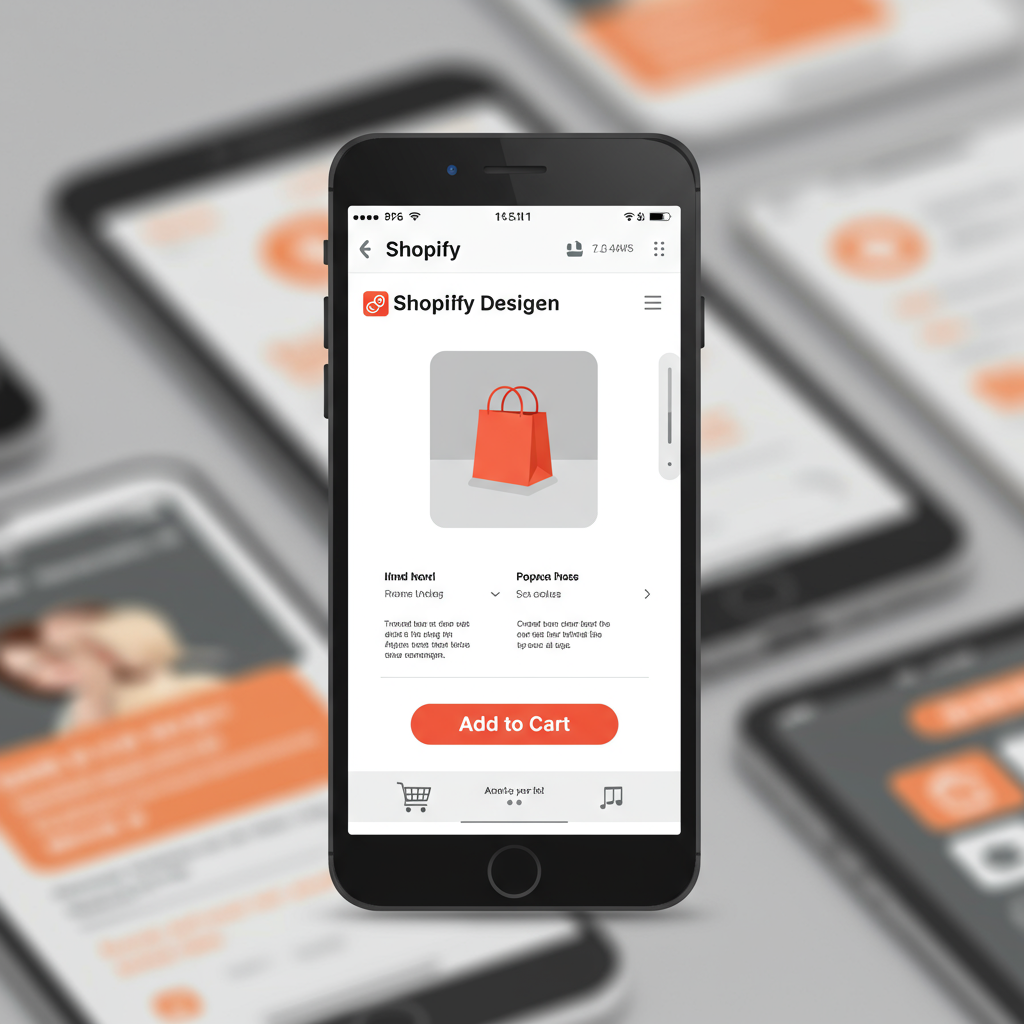Unlock the full potential of your online business by prioritizing the smartphone experience for your customers.
Hello fellow Shopify merchants! Today, I want to talk about something incredibly vital for your online success: designing a mobile-first Shopify store.
In my experience, this isn’t just a trend; it’s the standard. More and more, your customers are browsing, discovering, and purchasing from their smartphones.
Think about your own habits. How often do you reach for your phone to quickly check something, compare prices, or even make an impulse buy?
Statistics consistently show that mobile traffic often surpasses desktop traffic for e-commerce sites. If your store isn’t optimized for these users, you’re leaving money on the table.
A mobile-first approach means you design for the smallest screen first, then progressively enhance the experience for larger screens. It forces you to prioritize.
This philosophy ensures that the most critical information and functionalities are immediately accessible and easy to use, even on a tiny display.
So, where do we begin? The foundation of any great Shopify store is its theme. This is your starting point for mobile optimization.
I always recommend choosing a theme that is inherently “responsive.” This means it automatically adjusts its layout and elements to fit the screen size it’s being viewed on.
Shopify’s Theme Store offers many excellent responsive themes, both free and paid. Look for themes that explicitly state their mobile-friendliness.
Once you have a responsive theme, the next crucial step is optimizing your images and media. Large, unoptimized images are the biggest culprits for slow mobile load times.
I make it a point to compress all my images before uploading them to Shopify. Tools like TinyPNG or Shopify’s built-in image optimization can help immensely.
Consider using next-gen formats like WebP where possible, as they offer superior compression without sacrificing quality.
Beyond images, think about your navigation. On mobile, a cluttered menu is a nightmare. I strive for simplicity and clarity.
Use a “hamburger” menu icon (the three horizontal lines) – it’s universally recognized and saves space. Keep your main navigation categories concise.
Product pages are where the magic happens. For mobile, I focus on clear, high-quality product photos that are zoomable.
Your product descriptions should be scannable. Use bullet points, short paragraphs, and bold text to highlight key features and benefits.
The “Add to Cart” button needs to be prominent and easy to tap. I often make it a sticky element at the bottom of the screen as the user scrolls.
The checkout process is another critical area. Mobile users want a fast, frictionless experience. I ensure my checkout is as few steps as possible.
Enable accelerated checkouts like Shop Pay, Apple Pay, and Google Pay. These significantly reduce friction by pre-filling customer information.
I also recommend reviewing any third-party apps you’ve installed. Some apps, while great on desktop, can slow down your mobile site or not display correctly.
Always test new apps on a mobile device before fully integrating them. Your customers’ experience is paramount.
Speaking of testing, this is non-negotiable. I regularly use Google’s Mobile-Friendly Test tool and PageSpeed Insights to identify areas for improvement.
More importantly, I test my store on actual mobile devices – my own phone, a friend’s tablet, different browsers. This gives me a real-world perspective.
Pay attention to touch targets. Are your buttons and links large enough to be easily tapped without accidentally hitting something else?
Finally, remember that mobile-first design is an ongoing process. I constantly monitor my analytics to see how mobile users are interacting with my store.
Are they bouncing from certain pages? Are they completing purchases? This data informs my next set of optimizations.
What do you think about these strategies? Have you implemented any of them, or do you have other mobile-first tips you’ve found effective for your Shopify store?
By prioritizing the mobile experience, you’re not just making your store look good; you’re enhancing usability, improving conversion rates, and ultimately, growing your business.
It’s an investment that pays dividends in customer satisfaction and sales. I truly believe a strong mobile presence is the backbone of modern e-commerce success.
So, take the leap, embrace mobile-first, and watch your Shopify store thrive in the palm of your customers’ hands.






